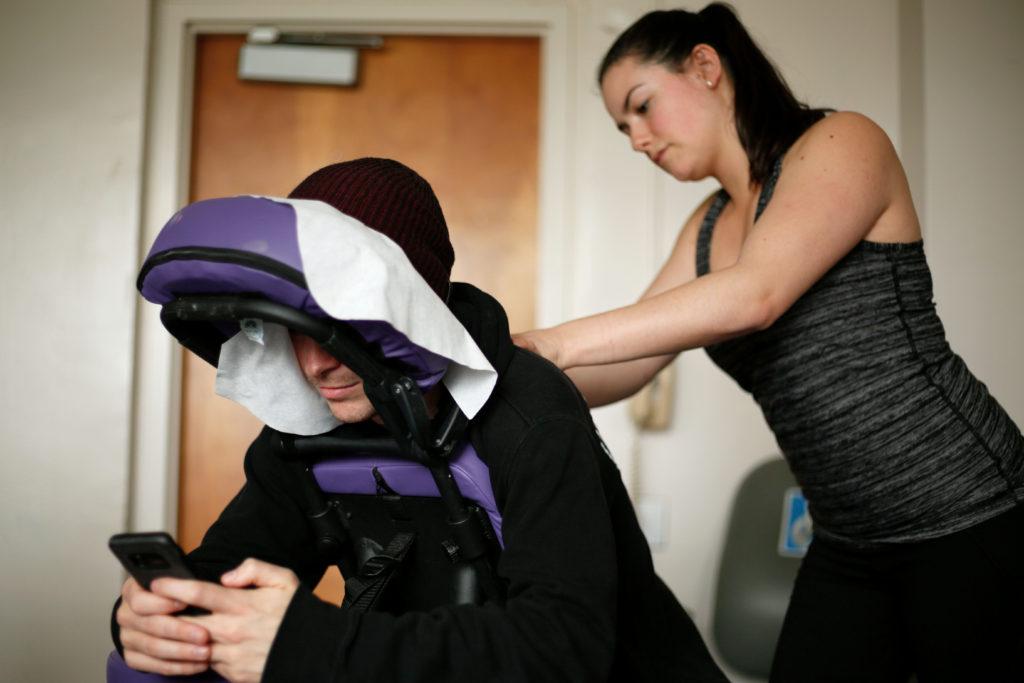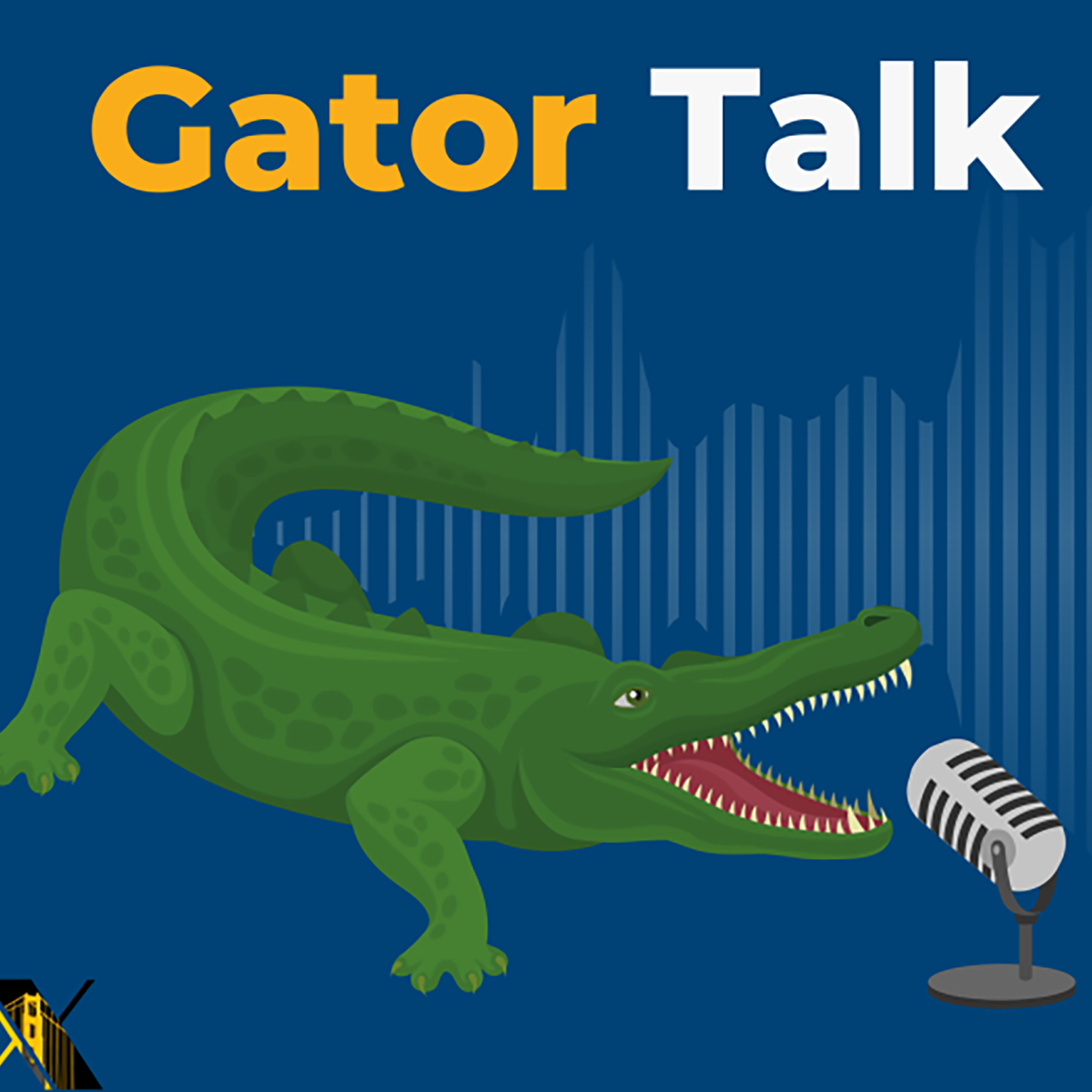Stress is a term students are all too familiar with. With the hurdle of midterms barely surpassed, graduation sending seniors into emotional turmoil and finals just around the corner, it’s no wonder college has become synonymous with stress.
But in Holistic Health 380: Western Perspectives, SF State students are taught how to view stress in a different light, giving students guided opportunities to navigate their individual life challenges and better understand how to take health in their own hands.
Professor Erik Peper, who teaches the course, is an expert in biofeedback who aims to teach students techniques that will mobilize them to become responsible for their own health. His class may be the answer for students looking to take a more natural and preventive measure to manage stress than medication.
Peper offers a unique but not new variation on stress. “We need it,” he said. “Stress is healthy. Stress can be horrible if it is prolonged but think of stress as a necessary challenge in your life. You need challenges to survive.”
“In a world where we are highly stressed, there are many thing we are doing that compromise our health and promote illness,” Peper said. “I want to teach tools of self discovery so that students may intervene in their own health in the most non-invasive way.”

His class explores the value of self-healing and preventive, allopathic medicine, rather than conventional medicine.
Weekly homework assignments come in the form of self-guided practices, outlined by the instructor to identify your main stressors, breath correctly and reduce anxiety and depression. These assignments, along with other projects, are aimed to help students become the healthiest and most aware version of themselves.
Julius Python, a business finance student at SF State, said that while he was initially skeptical about the idea of alternative medicine, his thoughts are beginning to change about the idea of self-stress management versus turning to a typical physician after only taking the class for a few weeks.
“I guess you could say that I’m a hard science guy so before taking the class I questioned the value of it,” Python said. “But I am only a little bit more than halfway through the practices and I have done so much work to improve my mental and physical health. I am finally understanding the patterns of my stress.”
Python also attributes social and emotional growth during the past few weeks to an assignment in the class that forced him to show his appreciation to someone in his life.
The assignment called “A Gratitude Visit,” has students write a letter to a figure in their life they feel has not been properly thanked for the impact they have had on their life. The student must then read the letter to the person.
“That assignment helped me rekindle a relationship with my father that had been strained for years. I was not expecting that at all but I’m grateful for it,” Python said.
The skepticism behind alternative medicine is not new but even the most unlikely of students are taking an interest and beginning to realize the possibilities.
Awareness of on-campus resources may play a huge part in how effectively students are able to cope with stress today.
According to a survey conducted by the National Alliance on Mental Awareness, 73 percent of college students have experienced a mental health crisis while in school and only 32 percent of college students would rate their college’s mental health crisis support as “somewhat supportive.”
“I definitely didn’t know about the resources on campus to help students with managing stress. I think a lot of people here don’t take advantage of them because they don’t know about them,” said Python.
Lisa Wolski, a biology major, is the first to admit that her newfound interest in holistic health seems counterintuitive to her field of study. Though, she does not think the interest is misplaced.
“My interest started after the first few practices in class. I was just so amazed at how well even the little changes I made worked,” Wolski said.
After a homework practice that helped monitoring her breathing patterns throughout the course of a week, she noticed a significant difference in her awareness of how shallow her breathes were and was able to shift to diaphragmatic breathing. Instead of breathing shallowly in her chest, she learned to breathe more deeply into her stomach, increasing overall oxygen flow. After completing the practice each day for a week, Wolski noticed her cramping decrease significantly.

“Everything in class is backed up by science, facts, data. The technology, biofeedback machines, are all the same things we use. I was skeptical at first that something like meditation would solve my problems, especially because so much of what I study is considered to be conventional medicine,” said Wolski.
Wolski’s end of the semester, self-healing project solidified her dedication to understanding the balance between alternative and conventional medicine.
Over the course of a few weeks, she designed a plan to reduce chronic stomach pains that she had developed in high school. The pain was unbearable, sharp and often prevented her from sleeping.
At first, she thought it was her diet that caused her severe abdominal pain but through the self-healing project, she was able to isolate the factors that contributed to her pain and develop a preventative plan. This stands as one of the main differences between today’s conventional medicine and alternative methods.
“The doctors weren’t able to tell me what was wrong but this practice helped me figure it out,” Wolski said. She was able to identify lack of sleep as a main trigger to her pain rather than her diet.
She then worked to develop a schedule where she would get more sleep every night. In the following weeks, she noticed her pain had subsided. Even after the class ended, she continued the practices and has incorporated them into her lifestyle.
“I think it’s to everyone’s benefit to take an interest, know their options. Because even if you aren’t interested in holistic health per say, its based around yourself and allows you to become more self-aware of your health,” said Wolski.[infogram id=”stress_van-every-1h706eovl1yq25y”]









